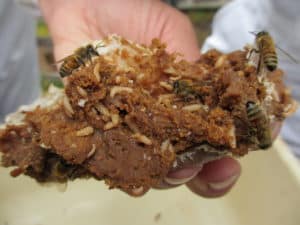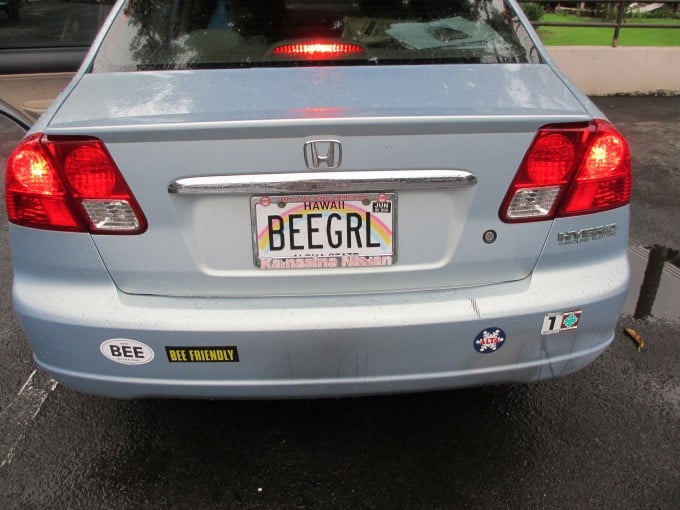
My primary purpose for going to Hawaii was to share and show Hawaiian bee breeders the type of work we are doing with the California bee breeders, and to see if they would be interested in participating in the future. It was also to train the two women I talked about in my last post, Danielle Downey Lauren Rusert, to assess colonies and take samples the same way we do in CA. This way, they will be able to work with the bee breeders in the future and be a part of the BIP.
I visited a total of four beekeepers during my visit and I did my best to soak up their concerns and ideas. Before I arrived, I read up a little on the hive beetle and its affect on the queen industry in Hawaii. My previous experiences with hive beetle were in MN, where it is really just a pest of stored equipment. (I did see some terrible results at the U of MN, where the beetle got into the equipment shed and ruined about 20 boxes of comb – the floor was covered in slime and moving). The beetle is not yet North of the Davis area in California, so the breeders I work with don’t have to deal with it yet (although it is a major concern to keep it out). From reading, I expected to see the beetle overrun colonies and larvae to slime everything.

Beetles can be plentiful, but they don’t seem to kill hives very often. The beetles do create management issues where the beekeepers need to be more conscious of opening hives at certain times, using treatments that make the bees vulnerable, keeping too small of colonies, and stored equipment. Many beekeepers have adult beetle traps in the colonies, and the only larvae I saw were in pollen patties. I learned that if the humidity level is less than 50% then the beetles don’t reproduce, so some beekeeper store equipment in large de-humidifying chambers to prevent loss of comb. I was only on the Kona side of the big island where the beetles aren’t so bad, but I hear the beetles are much more severe on the Hilo side.
But, as on the mainland, Varroa is the number one problem on Hawaii (the Big Island). If beekeepers are able to keep colonies strong and keep Varroa levels under control, then other pests aren’t so severe.
